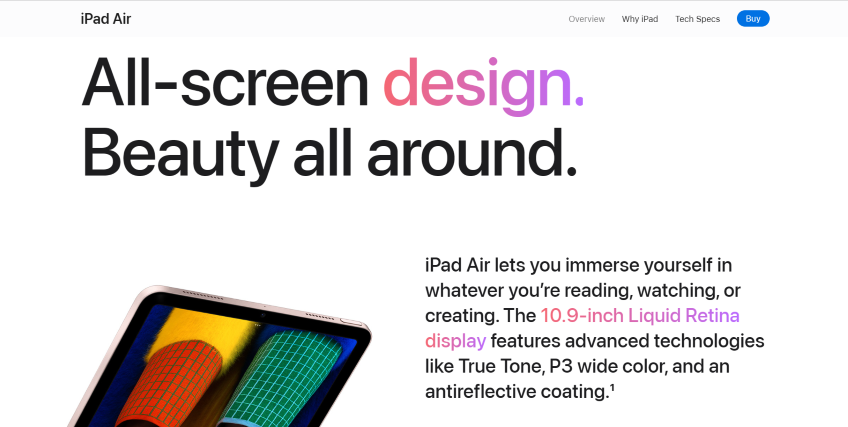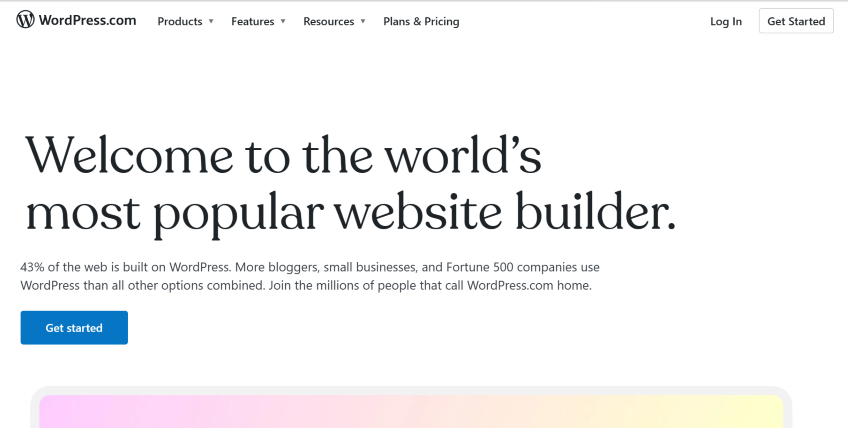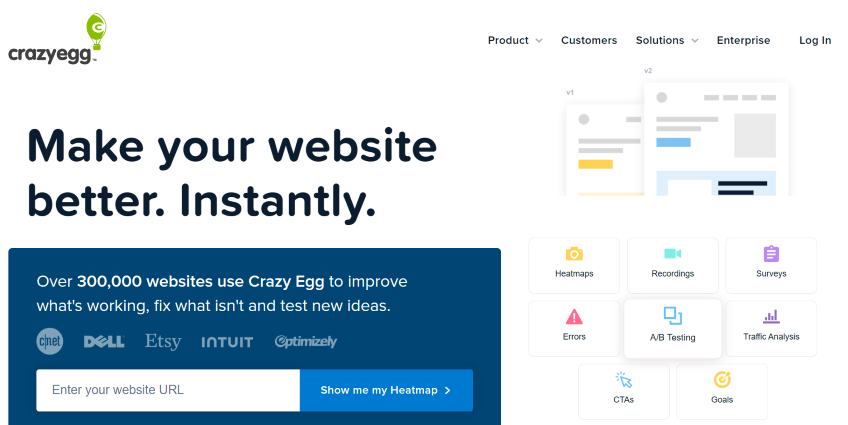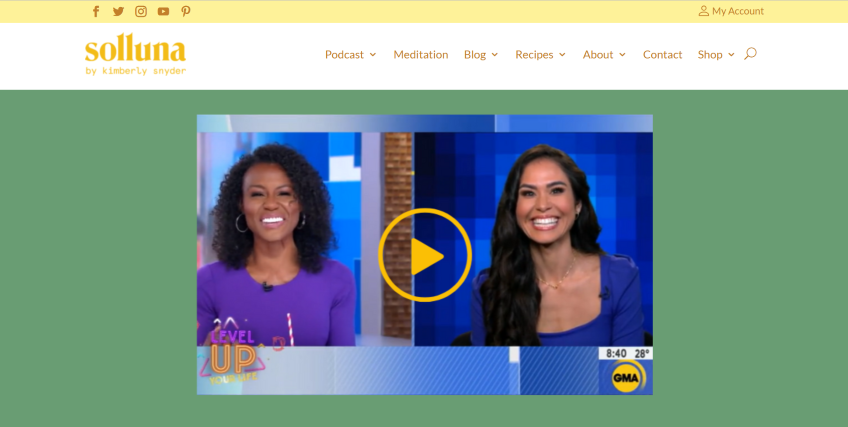The debate over copy length has been around forever: should you use long copy or short copy?
Short-copy advocates argue that people skim, attention is scarce, and long pages get ignored—so keep it tight and let visuals do the heavy lifting.
Long-copy believers counter that words sell. More space means more proof, more clarity, and more reasons to say “yes.”
Both sides have a point. In some situations, long copy wins; in others, short copy performs better. The only reliable way to know is to test: run controlled experiments and measure what lifts conversions for your audience and offer.
From years of testing with different companies and brands, one consistent pattern keeps showing up: the higher your brand awareness and trust, the less copy you typically need to move someone to action. Low-awareness or complex offers usually require more context.
Consider products you already recognize. If you know what an iPad is, you’re either in the market or you’re not—which is why Apple can use succinct messaging like the example below and still sell at scale.

Brands with high net promoter scores often get away with even leaner copy because happy customers do the convincing for them.
Take WordPress. Familiarity and positive sentiment let it rely on concise headlines and a few proof points without hurting conversion.

When people don’t know you yet—or the product is new or complex—longer copy helps. Unfamiliar visitors carry more questions and risk concerns. More space lets you address those objections clearly and calmly.
As a rule of thumb, earlier-stage brands (often under ~3 years old or with low market awareness) usually need longer copy. Use tools like Qualaroo to surface the exact questions and anxieties to answer, then tighten your message over time as trust grows.
There are caveats. “Free” or very low-friction offers often convert best with concise copy, while high-ticket or infrequent purchases usually require more detail and proof regardless of brand age.
The good news: there are reliable guidelines you can follow to choose the right length for the right page.
Let’s Get Started.
1. Only write as much as you need to write and no more
The first principle is simple: write exactly as much copy as you need to persuade a qualified reader—and not a sentence more.
If a point removes friction or strengthens the case to buy, include it. If a section clarifies value, outcomes, pricing, or next steps, keep it. If a paragraph repeats itself, derails focus, or introduces new doubts, cut it.
Over-explaining can backfire. Padding makes readers work harder and can talk prospects out of buying. Aim for depth without drift: cover the essentials thoroughly, stay on message, and stop when the job is done.
Whenever possible, test your copy. Try long-form vs. concise versions. Track primary conversions and leading indicators like click-through to checkout, scroll depth, and time on key sections. Sometimes a detailed page wins. Sometimes a tight page with strong structure and strategic CTAs performs better. Let the data decide, but always write to the level of proof your offer requires.
2. Long copy answers more objections
One clear advantage of long copy is objection handling. Every meaningful purchase triggers questions that stall action. Your job is to surface and resolve them.
Common objections include:
- The company may not seem trustworthy so customers decide not to buy.
- The product may seem too expensive, and the customer may feel like he can’t afford it.
- Customers may not understand the product and walk away out of confusion.
Others you’ll often hear: “Is this right for my situation?”, “How hard is setup?”, “What happens if it doesn’t work?”, “How is this different from what I’m using now?”, and “What results should I expect and when?” Longer copy gives you room to tackle these head-on with specifics, not hype.
A well-known example: the Crazy Egg homepage test. By expanding the page substantially and adding targeted explanations and proof, conversions jumped.
Conversion Rate Experts extended the page to cover what visitors most wanted to know and saw a meaningful lift—because the added copy resolved doubts instead of creating them.
Long copy worked there because it added useful content: clearer comparisons, social proof, and evidence. It wasn’t more words for the sake of it; it was more clarity.
Why did the longer version win?
With long copy you can answer key concerns and keep attention by pacing the page well. For example:
- We showed how Crazy Egg stacked up against Google Analytics (GA4) and Contentsquare because our visitors would continually ask us about that.
- We provided testimonials and a list of companies who used Crazy Egg because visitors wanted to feel we are a company they can trust.
- We provided results of a third-party study on our homepage to show the value of the product we were selling because our visitors wanted to know why they should buy our product.
Answering the right objections in the right order produced the lift. But once the core questions are covered, tightening can improve results further.
We later removed fluff, kept only the essentials, and made the page more direct—still addressing the main concerns.

The revised page was roughly 60% shorter yet preserved the critical proof points, resulting in another conversion increase. The lesson: cover all objections first; then compress without losing meaning.
3. Sometimes short copy is better
Not every offer needs a treatise. Short copy often wins when the offer is simple, the value is obvious, or the medium forces brevity.
Technical or high-value purchases tend to need more explanation and proof. But postcards, small ads, app store listings, and low-commitment lead magnets usually perform best with punchy headlines, crisp benefits, and an unmistakable call to action.
There are plenty of tests where short beats long because the audience already understands the category, trusts the brand, or just needs a nudge. The key question is: “Is there enough information here for a motivated buyer to act confidently?” If yes, more copy adds friction. If no, expand.
It’s possible that more detail would help a given page; it’s also possible it would distract people who are ready to act. That’s why testing matters. Match copy length to the decision being made, the risk perceived, and the context of the page.
In short: long copy can persuade; short copy can accelerate. Use the version that reduces the most friction for this specific offer and audience.
4. Video can help make your marketing message concise
We tested a similar approach with Kimberly Snyder: we tightened the page copy and added a video for visitors who wanted more detail without reading a long page.

This way, if you prefer watching or listening, you still get the information you need quickly.
The results were strong: the page’s conversion rate increased by just over 40%.

Video tends to perform well when it’s structured. A focused script beats a meandering monologue. Include these elements:
- Start your video by stating what your company does.
- Explain the problem you are solving.
- Show off the features of your product or service or explain why it is so great.
- Tell people to sign up or buy.
- Answer any major objections potential customers may have.
- Use proof elements to seal the deal such as testimonials.
5. People read what’s interesting to them
Readers make time for content that speaks to their goals. If the topic matters and the writing is clear, people will stop, engage, and read—long or short.

Think about your own habits. You might skim most headlines, but when an article promises a real solution to a problem you care about, you’ll read it closely—no matter the length.
Picture waiting at a doctor’s office. You flip past a few magazines until a feature on a topic you care about catches your eye. You read the long piece end-to-end. Why? Relevance beats length every time.
That’s how it works online, too. If a page is relevant and well structured—clear headlines, scannable sections, specific proof—interested visitors will keep going. If it’s off-topic or fluffy, they’ll bounce.
So don’t assume “people don’t read.” People don’t read irrelevant or poorly written content. Your job is to make the right people care—and then make it easy to say “yes.”
It’s also fine if most visitors don’t read your long copy. You’re writing for the subset who are actively evaluating your offer. Give them everything they need to decide with confidence.
In practice: lead with a strong, specific promise; back it with proof; explain how it works; address the top objections; show what happens next; and make the next step obvious.
Conclusion
People are tired of fluffy, salesy writing. Clear, concise copy that still answers the real questions will respect your reader’s time and usually boost conversions.
Keep these points in mind:
- Long copy often outperforms short because it answers more objections with specifics and proof.
- Short copy is sometimes necessary due to space limits—or better when the value is obvious and risk is low.
- If a motivated buyer already has enough information to act, adding more words can reduce conversions.
- Consider testing video for visitors who prefer to watch or listen instead of reading.
- Get to the point: what you offer, how it works, why it’s credible, what it costs, and what to do next.
If you’re writing for the web, you have room to elaborate and to place calls to action throughout the page so readers can act at the moment they’re ready. If you’re writing a sales letter or working within tight constraints, be more selective—prioritize the highest-impact points and remove anything that doesn’t earn its place.
